By Lisa Bland –
Brandi Wattam is a passionate naturalist. Growing up in Ontario, she spent a lot of time outdoors and canoeing. In BC, she has worked in a number of nature-related jobs including seasonal fruit picking, mushroom picking, treeplanting, and working in greenhouses. Brandi also has a passion for facilitation and leadership, working for Big Brothers and Big Sisters and in an outdoor education centre. She holds certifications in Wilderness and Level 3 First Aid and is a certified lifeguard.
“Since the moment I learned about the Rivershed Society of BC’s (RSBC) Sustainable Living Leadership Program (SLLP), I knew I’d be a participant,” says Brandi. “I am awestruck by the power of Mother Nature and what attracted me to the program was the idea of being out in nature for 27 days straight. What also appealed to me was the wilderness areas we’d be visiting, the leadership aspect of the program, and designing a project within our own community.”
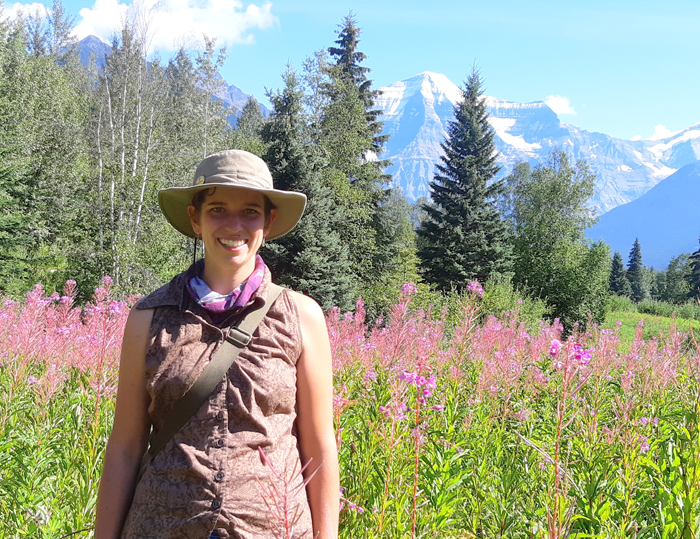
Brandi noticed interesting and diverse articles about watersheds, the environment, good news stories, and environmental concerns on RSBC’s social media page and she knew the group’s approach and perspective aligned with her own. Brandi was also inspired by Fin Donnelly, the RSBC’s founder and chair, and his journey swimming the entire length of the Fraser River.
“The RSBC’s mission and goals are something I believe in and am proud to support—salmon flourishing in rivers and people flourishing in riversheds,” says Brandi. “The group’s mission to conserve, protect, and restore the health of the Fraser watershed within a generation and put a leader into every community in the rivershed, creating a network of people making a difference, is something I am really behind. Critical mass needs critical connections, and I believe there is power to change the world in a small group of passionate people.”
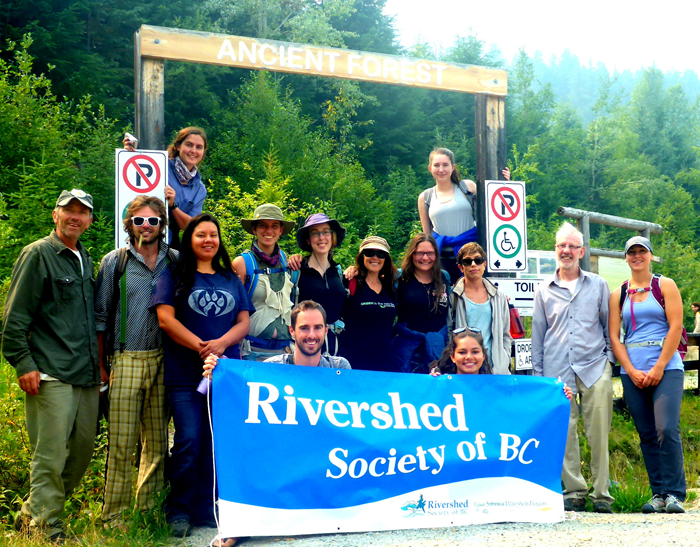
Brandi was excited to go on the SLLP trip to help develop her community project. For the past 10 years, she’s dreamed of creating a business and wanted to find more support to make her goals tangible.
Brandi’s SLLP project plan is to create a self-sustaining gleaning business in Kamloops. The volunteer-based program will harvest fruit from trees in backyards or other areas with an overabundance. One-third of the harvest will go to the owner of the trees, one-third to the volunteers helping to harvest, and one-third to the gleaning project where Brandi will process the food to create products to sell at markets and sustain the business long term. “We are blessed to live in a province with diverse geography that produces an abundance of cultivated and wild foods,” she says. “My dream is to see none go to waste.”
Along the journey, Brandi identified smart goals and action items to streamline her project plan, presented, and shared the plan with the group and communities along the rivershed. “The more I was able to iterate what my plan was, the clearer and more concise it became,” she says. “Feedback from others about strengths and weaknesses, as well as networking and information sharing, was a great support as well.”
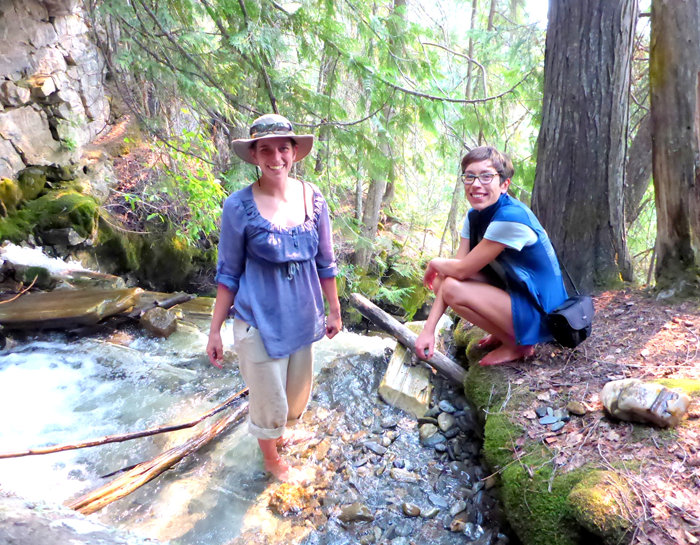
“During the winter, I’ll be collecting the materials I need for the spring season, including maps to determine where available food and fruit trees are,” she says. “Since returning home from the trip, I’ve processed grape jelly, pears, and apples, and I have cherry tomatoes and salsa in the freezer. I’ve also been in touch with the Merritt Mountain Society about a strategy focusing on bear prevention.”
Brandi gained a number of insights and a new understanding about the Fraser River watershed as well. “Something that stood out to me was learning that for the first 17 years of a white sturgeon’s life, its biggest threat is salmon, and after that, its biggest food source is salmon,” she says.
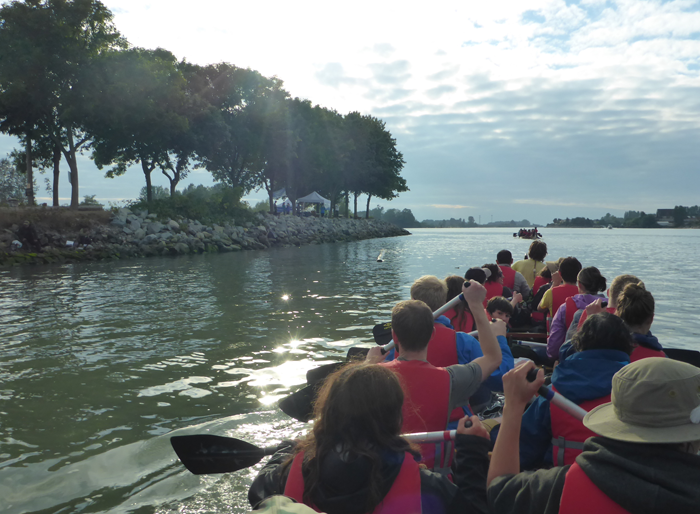
“Paddling into the Lower Mainland and Greater Vancouver area, and camping along the river banks, opened my mind to how many people’s perspective of the Fraser River could be that it is unhealthy and polluted with industrial buildings, machinery, and logs along its banks,” she says. “I also didn’t realize the length of the city sprawl along the lower Fraser and the extent of the railway running along its banks.”
“It was very eye-opening to see how many fishermen were fishing in the lower Fraser,” she adds. “I didn’t know it could be a sustenance food for everyday people.”
Brandi learned about the extent of the Fraser River and how many tributaries run into it and was surprised to learn that the Fraser is the largest undammed river in all of North America. “It hit home the need for conservation, and the social need for awareness about the Fraser River’s presence and beauty,” she says. “I imagine that most people living along the Fraser River in the Greater Vancouver region don’t often take the opportunity to go north and see it from another perspective, such as swimming in it.”
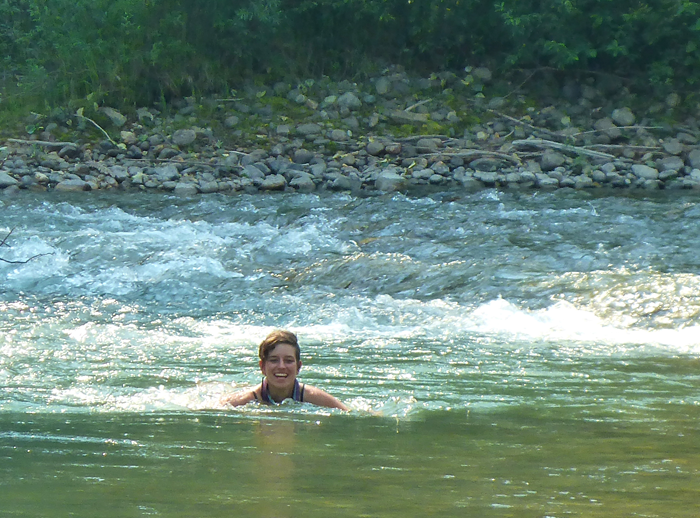
One of the highlights Brandi remembers from the trip occurred at the mouth of the Stein River near Lytton, where a First Nations man and his son were gillnet fishing near the SLLP camp. “We were close to their fishing grounds and they welcomed us and gave us the opportunity to throw out their net and bring it back in, as well as gut and kill the fish,” she explains. “The experience of carrying a fish back to camp and knowing we would eat it, as well as talking with a man who had joined our group for a few days that had never touched a dead fish before, and seeing how authentic his experience was, really left an impression. It showed me how, here on the side of the river, people came together in the spirit of learning and generosity, and the experience was so much richer than any workshop or meeting.”
Brandi also accompanied her friend from Lillooet, Keely Weget-Whitney of the Stl’atl’imx and Gitxsan First Nation, in her swim to raise awareness about issues facing the Fraser River. Brandi swam with her friend along various sections of the Fraser River during Keely’s two-day swim from Lillooet to Boston Bar during the SLLP journey.
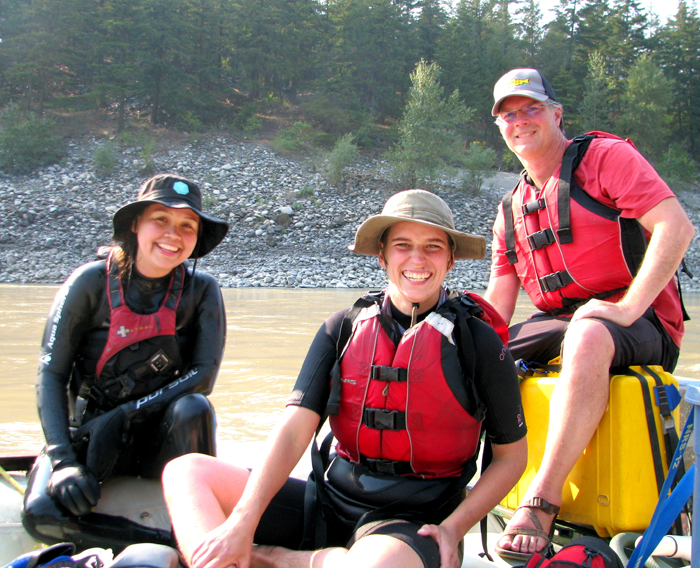
“Whitewater rafting was really incredible, including going through Hell’s Gate,” Brandi says. “The SLLP facilitators and our river rafting guide were wonderful, as well.”
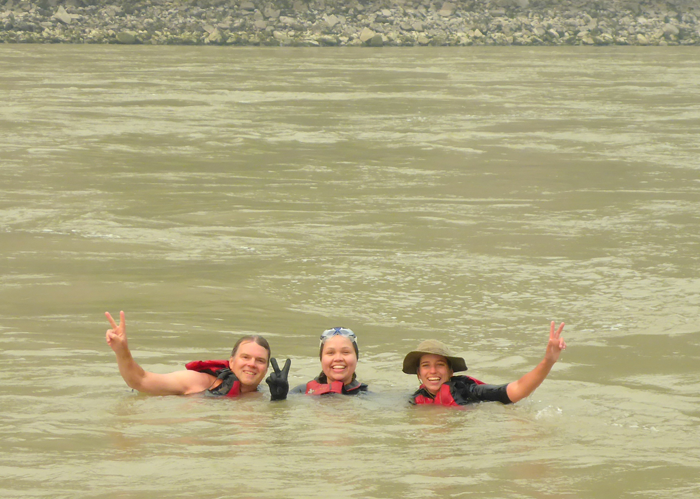
Some of the challenges Brandi encountered were in group dynamics. “I learned that it was important to have clear communication with others to be able to go with the flow,” she explains. “This sometimes meant being vulnerable about where you’re at in facing interpersonal, internal, or environmental challenges. In our group, it became a team-building experience of supporting each other in self-acceptance and self regard during such a life-changing and intense experience.”
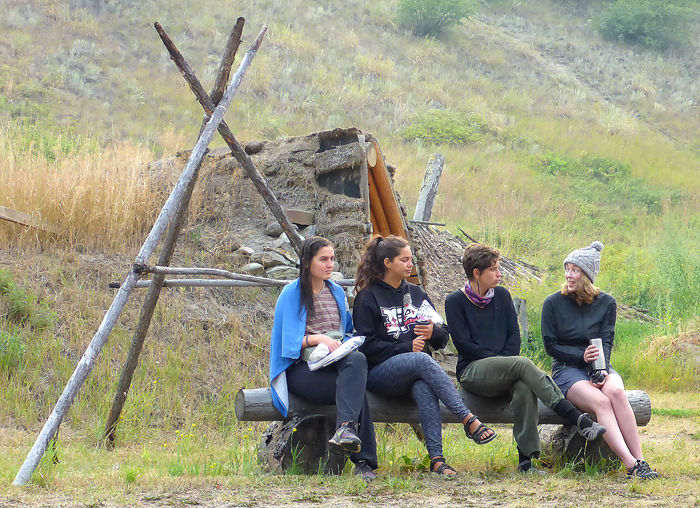
“The duration of the trip also allowed the walls and masks you present to the world to drop away,” she said. “Inevitably there was a letting go and that created deeper connections with the others in the group,” she says. “What was life-changing was recognizing that I can take my time and create space where I need it, express myself, and recuperate. I learned that it’s not about a specific race where there’s a finish line. In my greater life, I will challenge myself to take the slower road.”
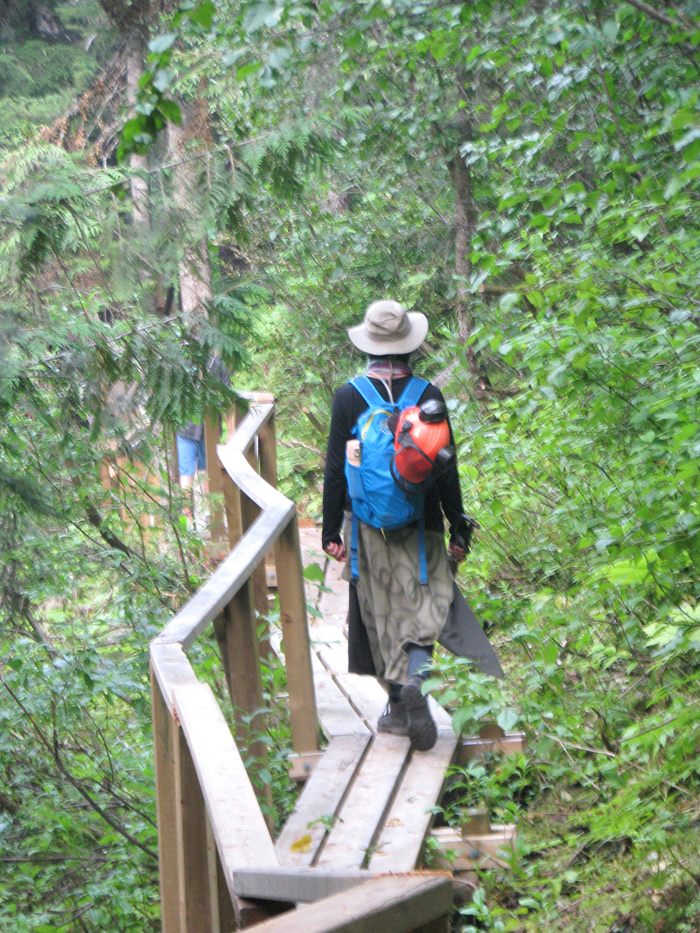
Since returning from the journey, Brandi has had many exciting ideas about her plans. “Becoming self-sufficient in something I’m passionate about, keeping my connection to community very local, doing something relevant to my lifestyle, and adding value to those around me, feels so much more possible since the rivershed journey,” she says. “I am grateful that I have a foundation with tangible goals and support to make some of my dreams possible.”

https://rivershed.com/get-involved/sustainable-living-leadership-program/about-the-sllp/
